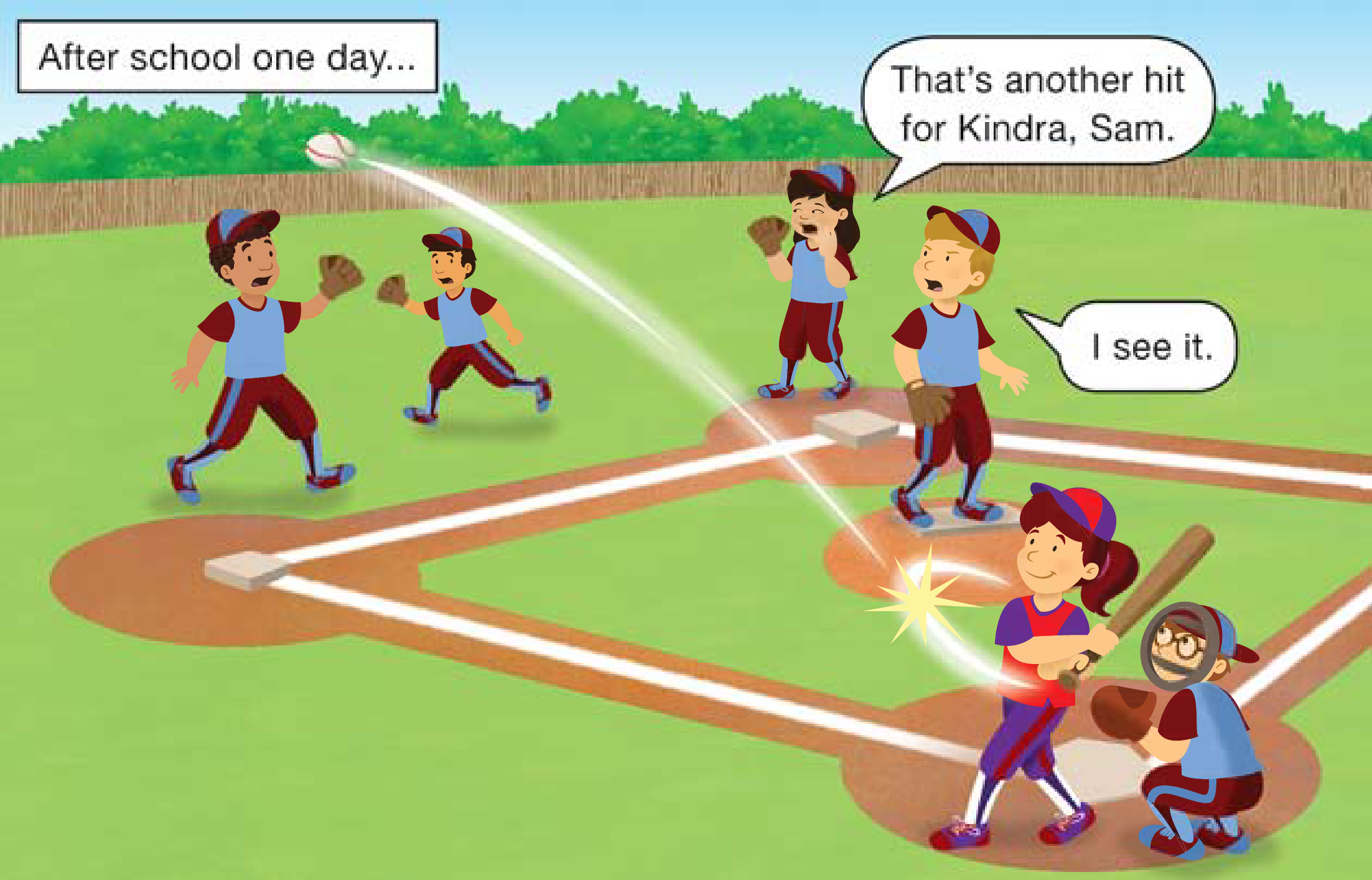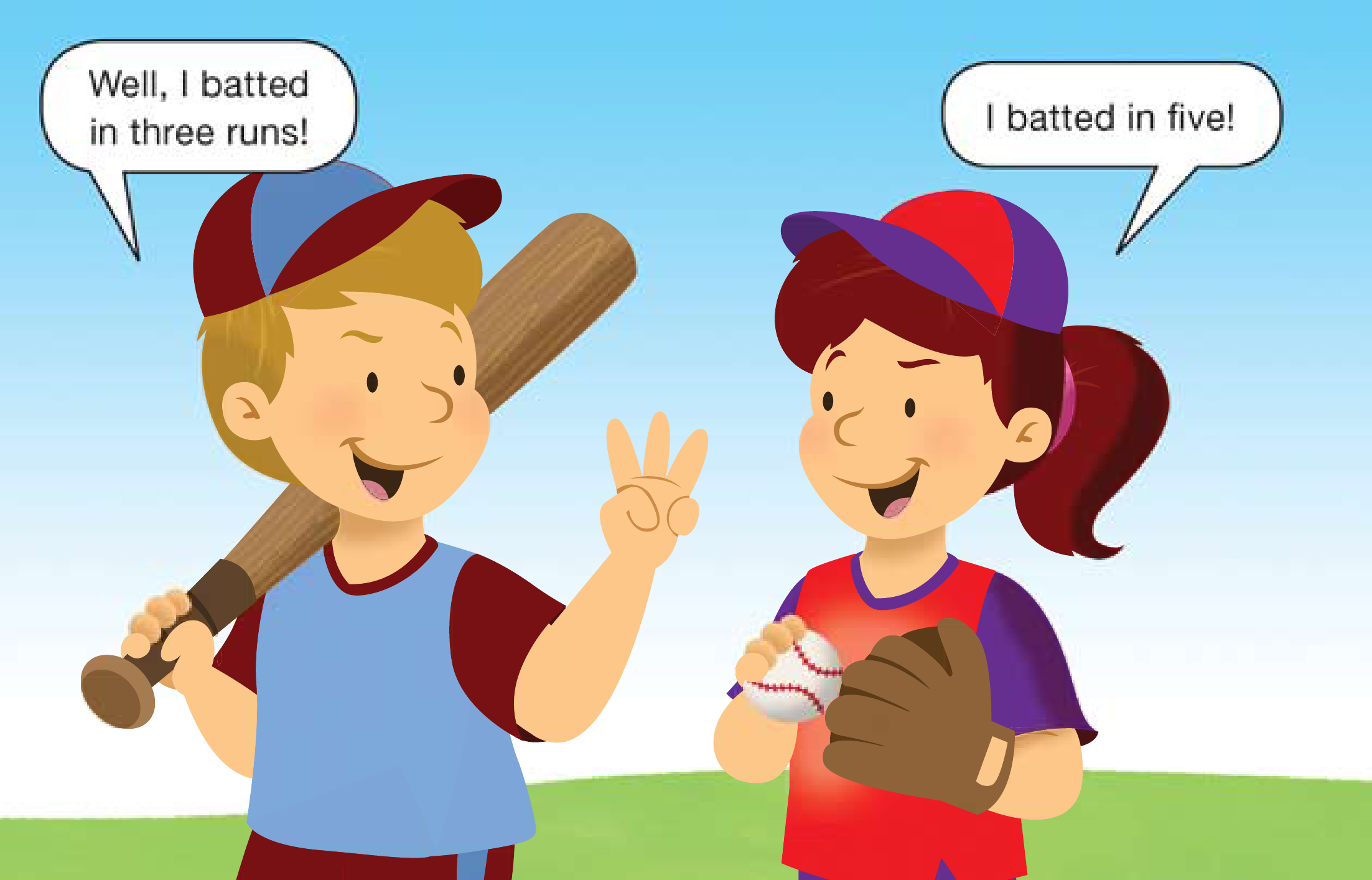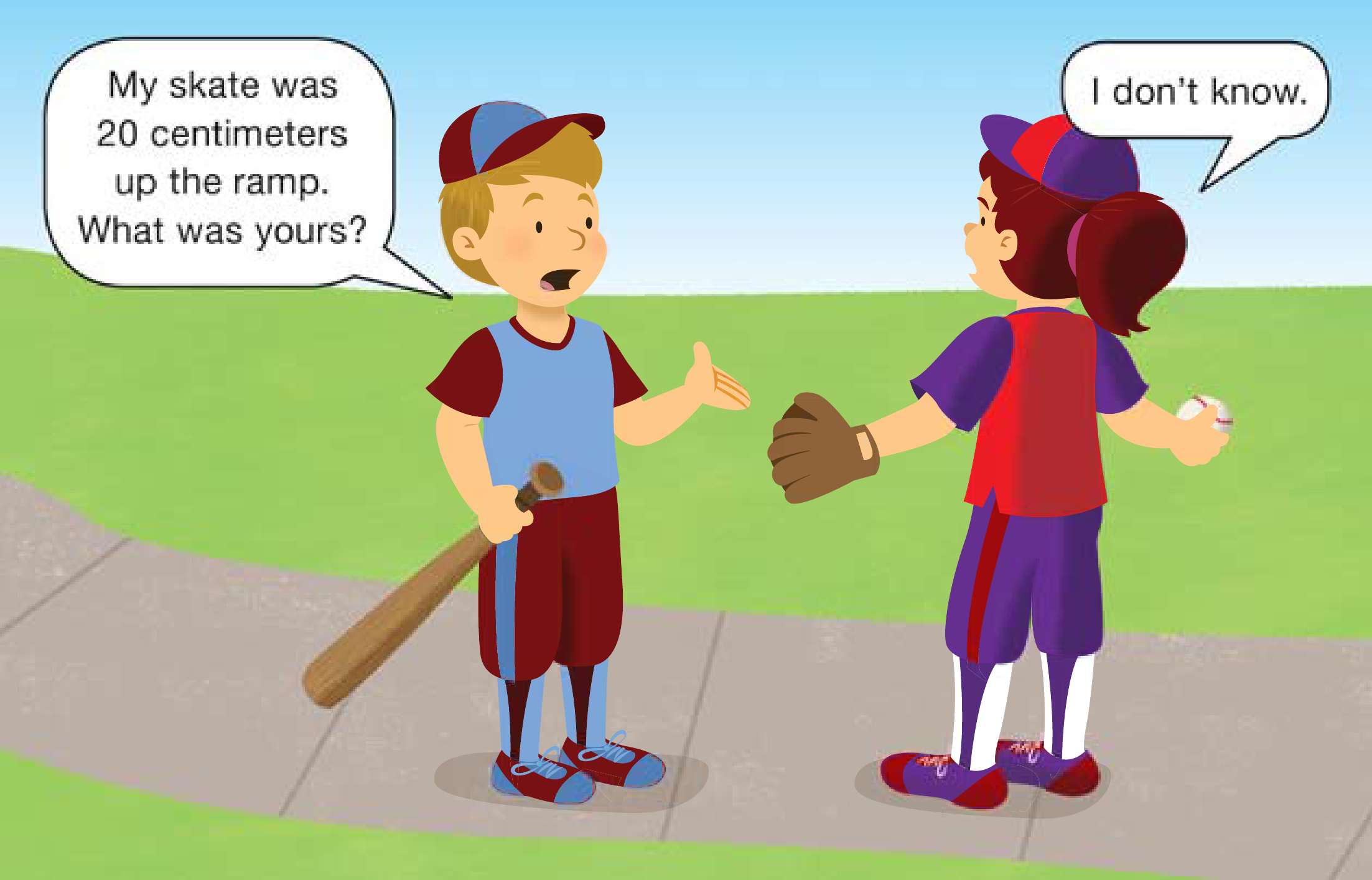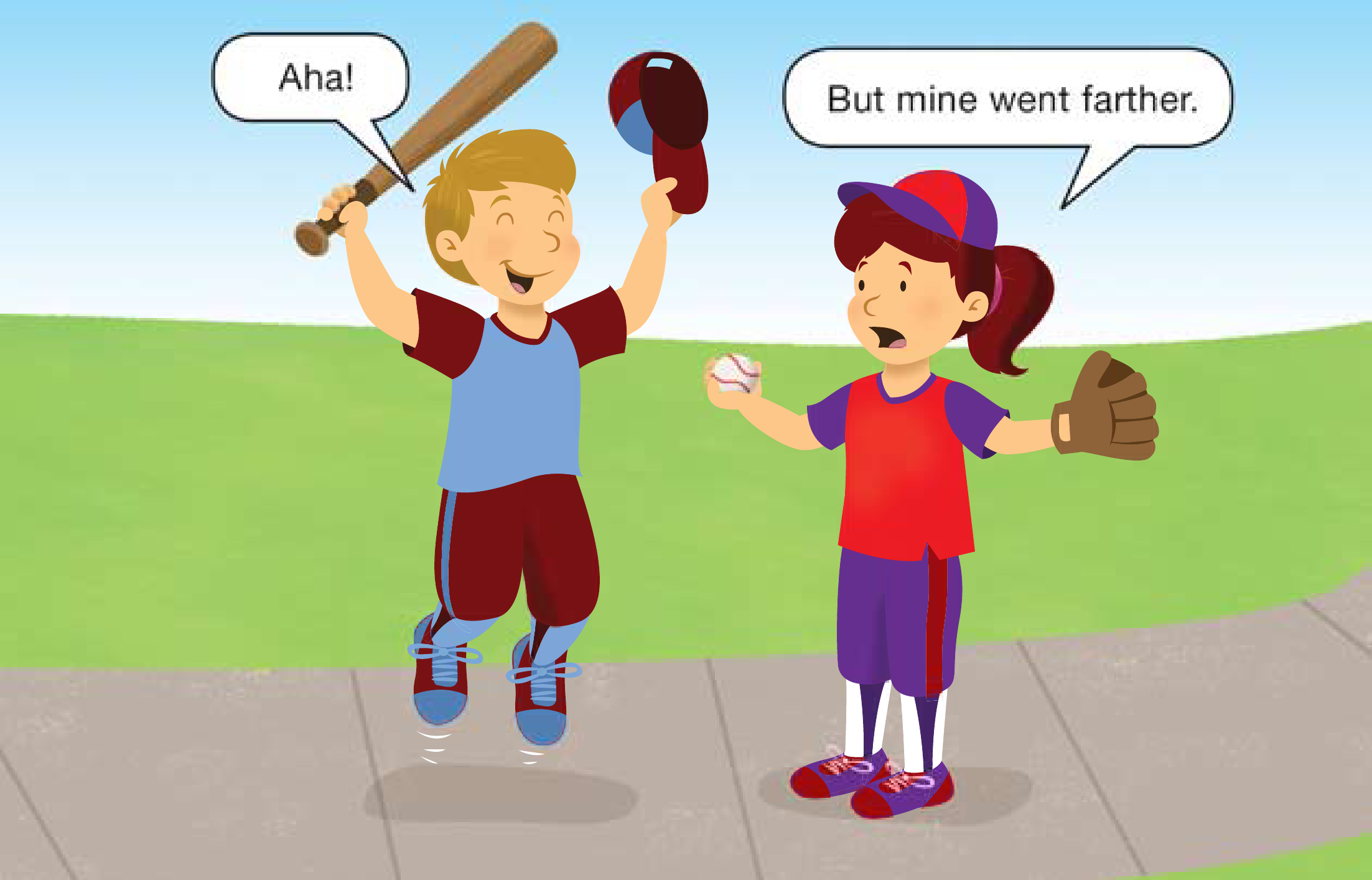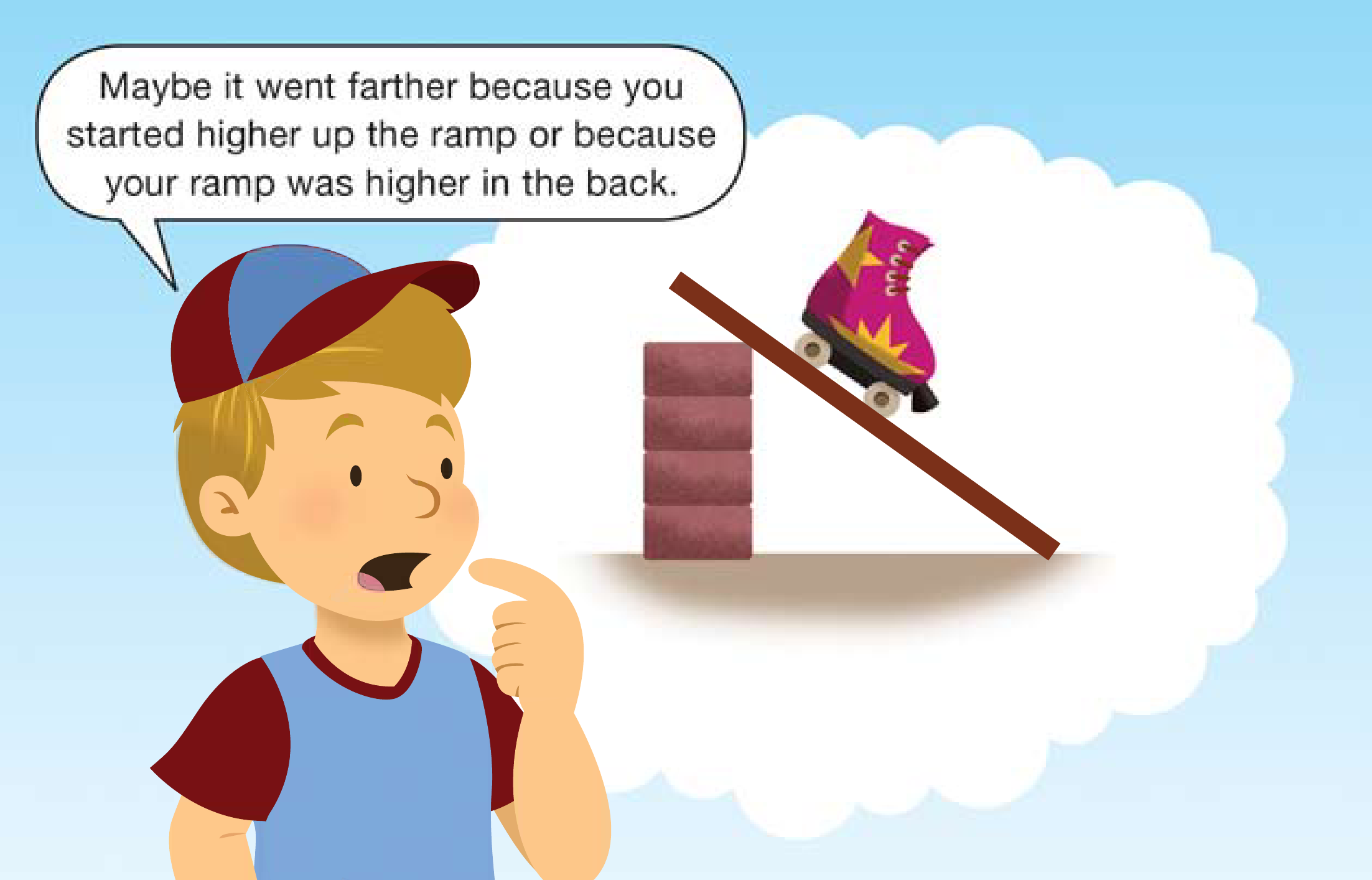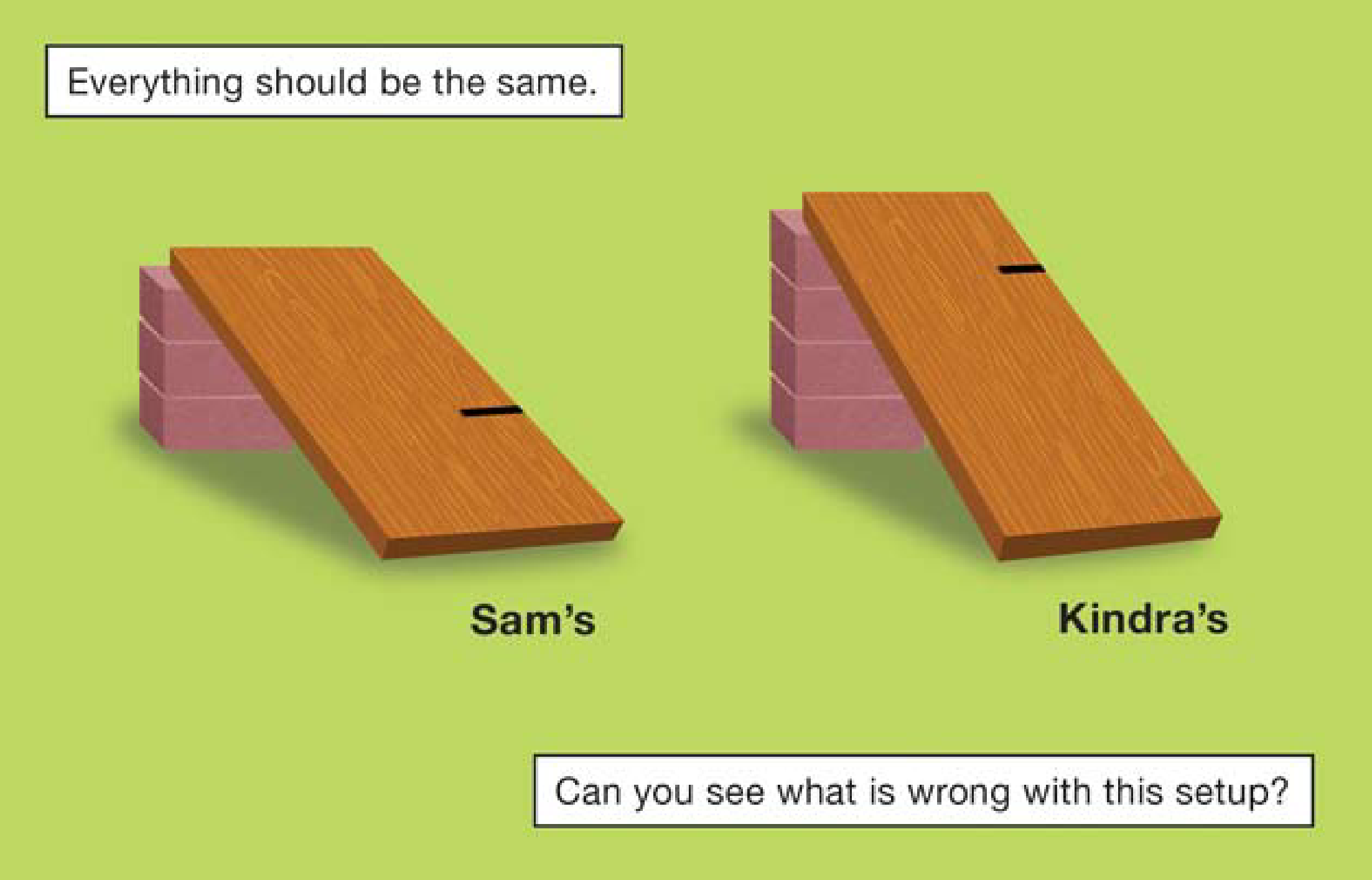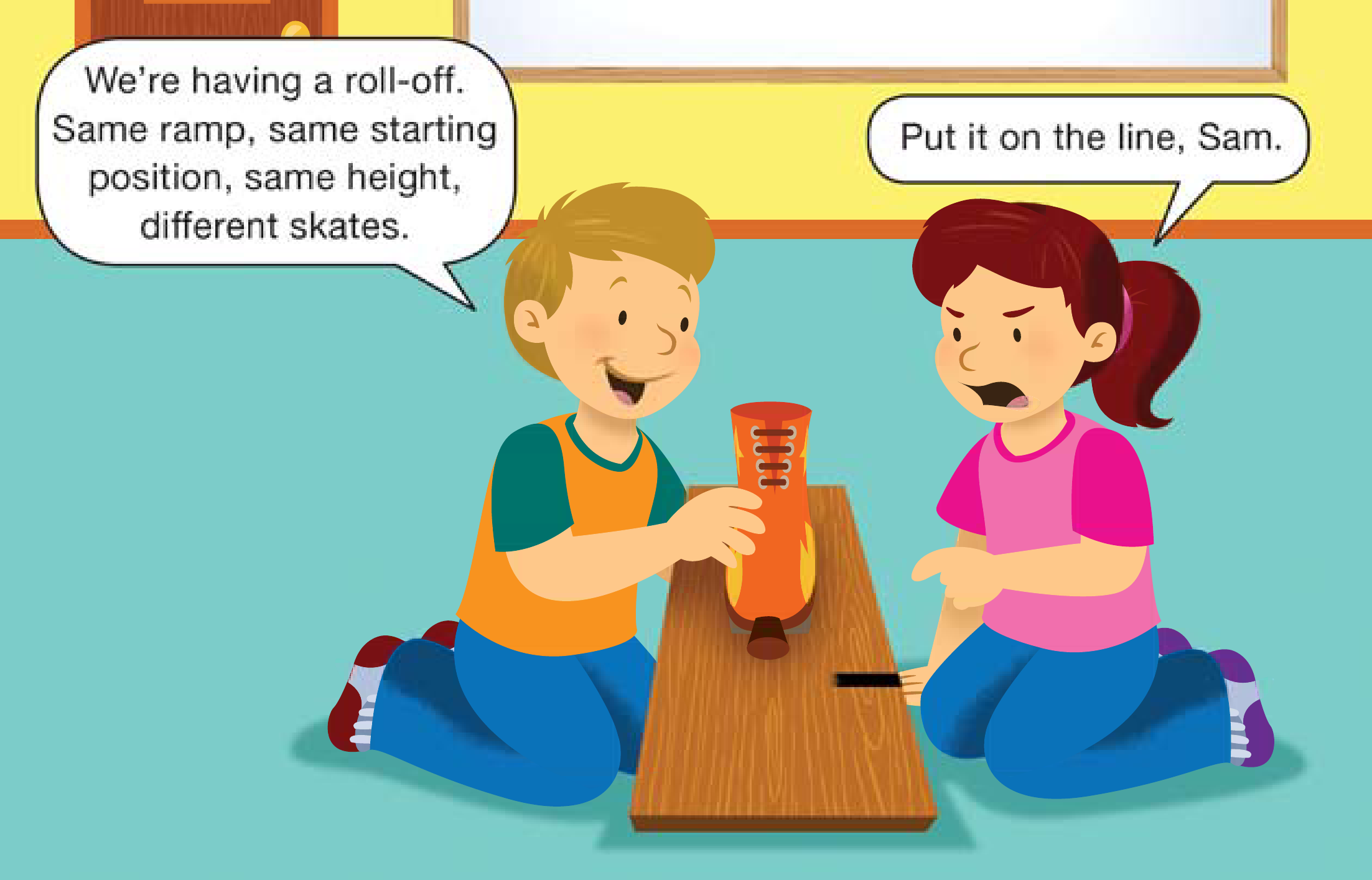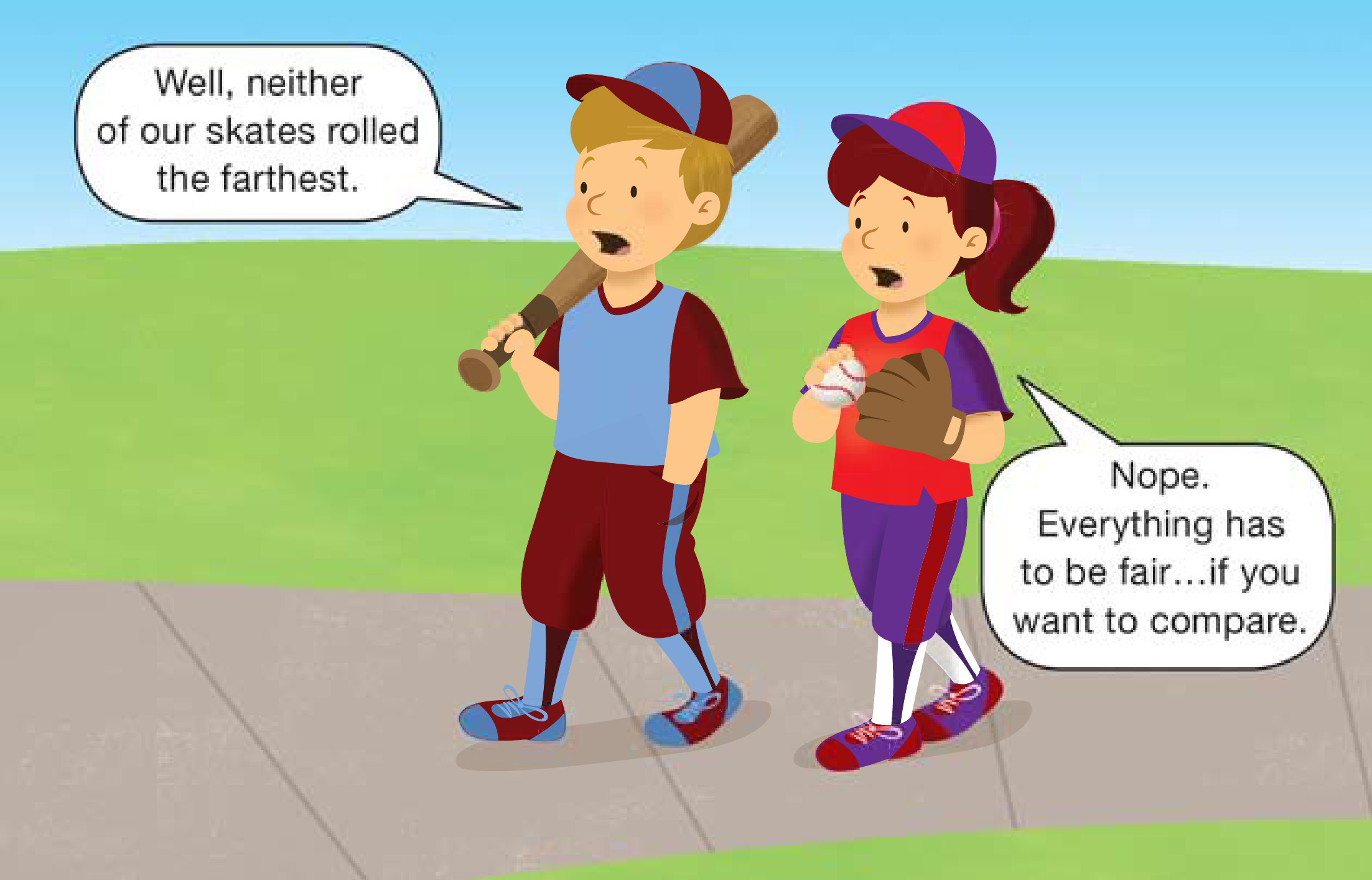The Adventure Book story, "Mine Is the Best: The
Challenge," describes two highly competitive students
who compare their results from an investigation
in which each rolled a roller skate down a ramp.
Sam suspects Kindra did her investigation in a different
way than he did and challenges the results of
their Rolling Along in Centimeters investigation.
Their decision to have a roll-off allows for class discussion
about the importance of fixed variables during
an investigation. Using the same techniques as
described in the story, students will conduct a similar
investigation in Part 2 of this lesson. The story provides
opportunities for discussing controlled variables
and the effect of changing variables in an
experiment. Use the prompts to guide discussion
about the story.
Page 2
- What do you notice about Sam and Kindra's conversation? (Each student is bragging about his or
her accomplishments. Neither seems to be listening
to the other.)
Page 4
- What is silly about their conversation? (Possible
response: Sam and Kindra are trying to make the
number of brothers and sisters they have a topic
for competition.)
- What would make Sam and Kindra's conversation
clearer? (Both students' statements are not clear
because they do not label their numbers adequately.
Does Sam have 2 brothers and 2 sisters
or does he have one brother and one sister, making
a total of 2? Does Kindra have 4 brothers or
4 sisters?)
Page 8
- Why does Sam want to know Kindra's starting
point on the ramp? (Kindra said that her skate
rolled farther than Sam's skate. Sam believes this
is because Kindra's skate was placed higher up
the ramp. He knows he started his skate at
20 centimeters from the bottom of the ramp. He
wants to know where Kindra placed her skate so
he can compare the starting points.)
- Why is this important? (It might make a difference
in the result.)
Page 10
- What do you think of Sam's ideas for why Kindra's
skate rolled farther? (If either condition is true
[Kindra started her skate higher up the ramp than
Sam did or her ramp was steeper than the one
Sam used], then chances are good that Kindra's
skate would roll farther.)
- What can Sam and Kindra do to see which skate
rolls farther? (Sam and Kindra can set up the
investigation again. For this race, they must
make sure that they both start their skates at the
same place and that the height of the ramp does
not change.)
Page 11
- Look at the picture. Are Sam's and Kindra's ramp
setups the same? How do you know? (No, the
setups are not the same. Sam has used three
blocks to raise his ramp, and Kindra has used
four blocks. Therefore, Kindra's ramp is higher.
Sam's starting point is lower on his ramp than
Kindra's is on her ramp.)
Page 12
- What can they do to make the roll-off fair? (They
can agree to use only one ramp, or they can
change the number of blocks used to raise the
ramp so that it is the same for both ramps. The
starting points should also be the same. It appears
they used two identical boards to make their
ramps. If one board were longer, it would also
affect the results.)
Page 13
- What are Sam and Kindra doing? (Sam and
Kindra are setting up for the roll-off.)
Page 14
- Do you think the roll-off will be fair? Why or why
not? (Yes, the roll-off will be fair because they
are making sure everything is the same. They
have marked a starting point, and they have a
meterstick to measure the distance the roller
skate rolls.)
- Sam is careful to make sure everything is the
same for each competitor during the roll-off. Why
is that so important? (The ramp, the height of the
ramp, and the starting point are all fixed variables
in this investigation. By keeping the variables
the same, Sam keeps the investigation fair.)
Page 20
- Do you think Kindra and Sam believe the roll-off
was fair? Why or why not? (They are able to
accept the results of the roll-off because it was
fair. They know it was fair because they made
sure the fixed variables remained the same.)













